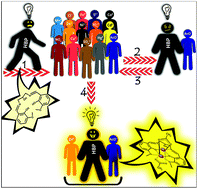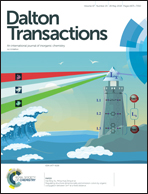A newly developed highly selective Zn2+–AcO− ion-pair sensor through partner preference: equal efficiency under solitary and colonial situation†
Abstract
Unusual self-sorting of an ion-pair under highly crowded conditions driven by a synthesized intelligent molecule 2-((E)-(3-((E)-2-hydroxy-3-methoxybenzylideneamino)-2-hydroxypropyl imino)methyl)-6-methoxyphenol, hereafter HBP, is described. When a mixture of various metal salts was allowed to react with HBP, only a specific ion-pair ZnII/AcO− in the solution simultaneously reacted, resulting in high-fidelity ion-pair recognition of HBP. This phenomenon was evidenced by significant changes in the absorption spectra and huge enhancement in emission intensity of HBP. The property that one molecule preferring one particular cation–anion pair over others is a rare but interesting phenomenon. Thus, the potential to interact selectively with the targeted ion-pair resulting in the formation of a specific complex recognized HBP as a new class of molecule that might find future applications in real time and on-site monitoring and separation of new molecules.



 Please wait while we load your content...
Please wait while we load your content...